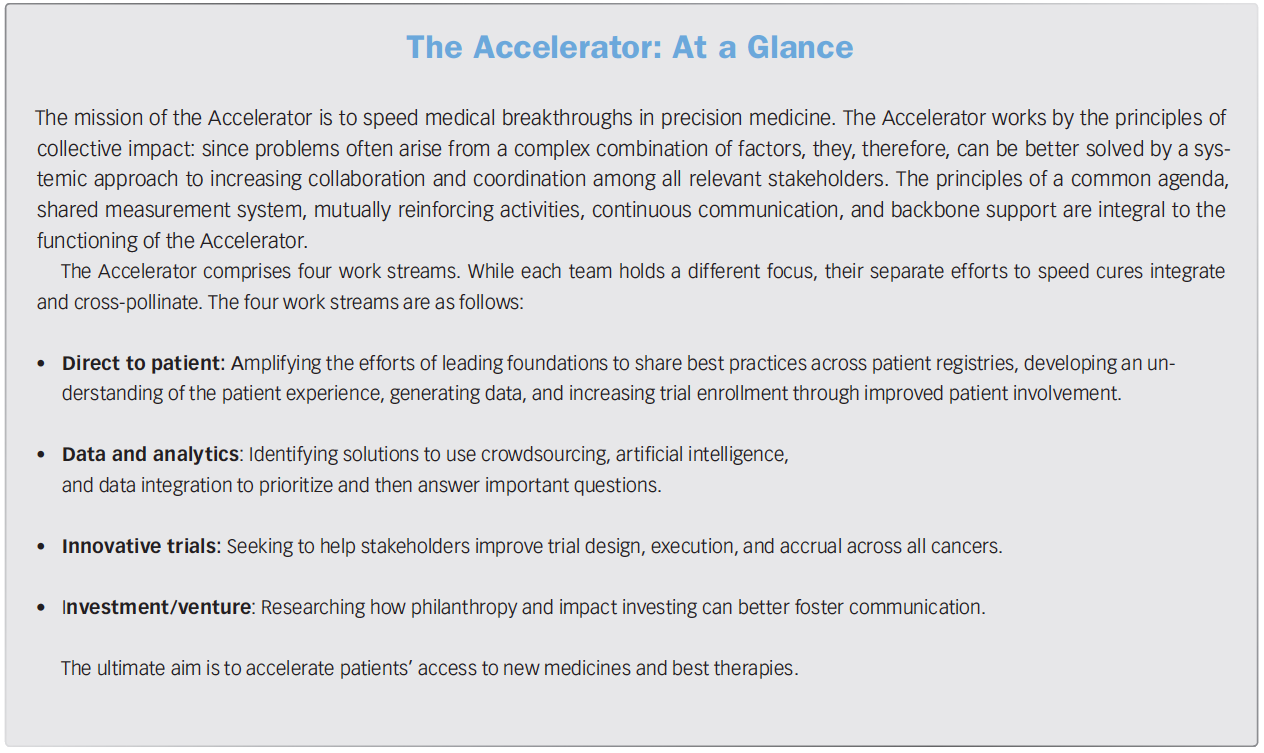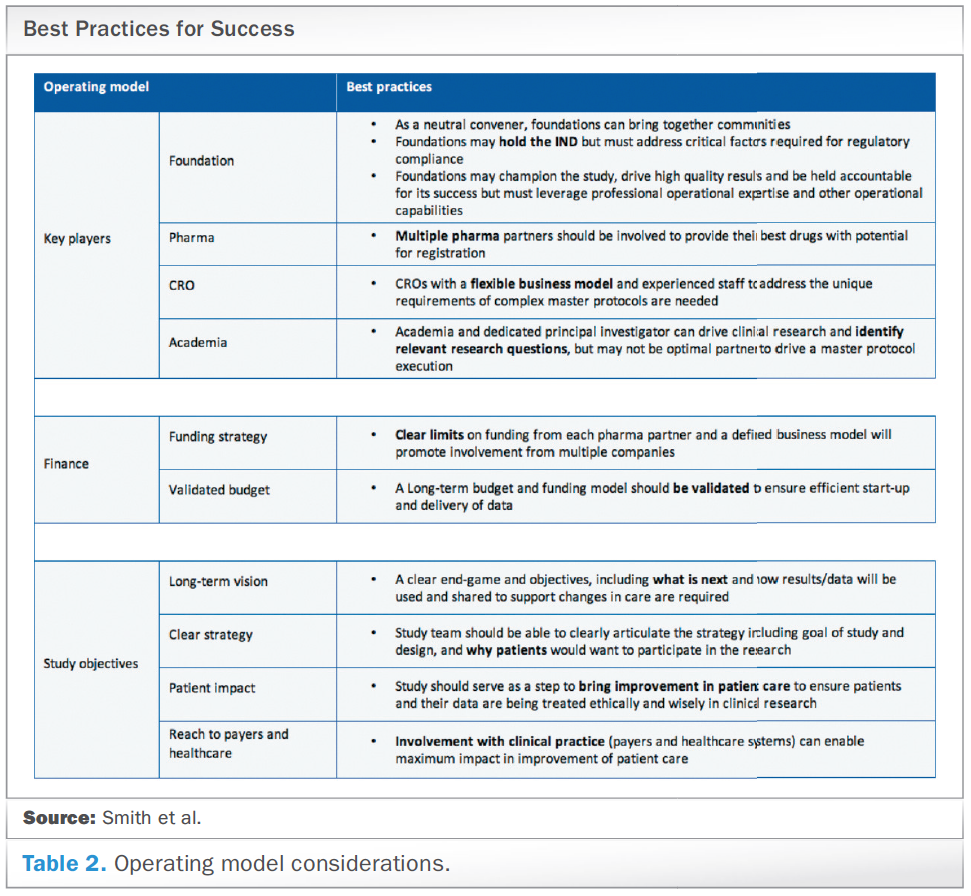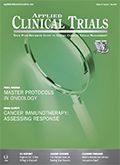Master Protocols in Oncology: A Review of the Landscape
Applied Clinical Trials
With technology’s increasing ability to gather and analyze previously unmanageable data sets, and medicine’s forays into genomics and targeted therapies, the time of the master protocol may be at hand.

The innovative form of trial design known as a master protocol is gaining attention, particularly in oncology. “The widespread availability of next-generation genomic sequencing has opened the door to the development of precision oncology,” as experts have noted.1 With technology’s increasing ability to gather and analyze previously unmanageable data sets, and medicine’s forays into genomics and targeted therapies, the time of the master protocol may be at hand.
But what will it take to make the master protocol a standard in oncology research? When and under what circumstances is a master protocol appropriate and how can its use be optimized to drive patient impact?
Well-known past, ongoing, and planned master protocol studies suggested that significant progress has been made in the field establishing design and operational practices. The Harvard Business School (HBS) Kraft Precision Medicine Accelerator (referred to as “the Accelerator” throughout) saw the immense potential of the master protocol model and evidence of substantial progress. To better understand the landscape, the Accelerator brought on QuintilesIMS (now IQVIA) to conduct a review, based on primary and secondary research.
The Accelerator, with the help of QuintilesIMS, has taken on this rapidly evolving area of research-investigating past, current, and planned trials and interviewing experts from all facets of research, to understand current approaches and work with leaders to increase collaboration and patient impact across a range of cancers.
Master protocols in oncology research
Master protocols in oncology research are designed, as Janet Woodcock, director of FDA’s Center for Drug Evaluation and Research (CDER), puts it simply, “to answer more questions more efficiently and in less time.”2
Various terms are currently used to describe study designs that differ from a traditional interventional Phase I, II, or III design, including adaptive, platform, or innovative design. Each of these terms have either specific meanings (adaptive) or are general (innovative). However, the term master protocol is well accepted to represent an ongoing trial intended for the addition or removal of drugs, arms, and study hypotheses.
Master protocols may or may not be adaptive, umbrella, or basket studies. They may be a collection of sub-studies or a complex statistical design or platform for rapid learning and decision-making. Whether umbrella, basket, or platform, a master protocol seeks to update the randomized clinical trial model for the genomic age.
Because of their ability to combine a variety of logistical, innovative, and correlative elements, while making it possible to learn more from smaller patient populations, many master protocols investigate targeted therapies, personalized medicine, and immune responses-frequently in oncology. Their ability to speed and streamline the trial process holds the promise for new, more targeted anti-cancer agents that can help more patients sooner.
The Accelerator Clinical Trials work stream
The Accelerator’s Clinical Trials work stream seeks to help advance trial design across cancers by:
Click to enlarge

- Identifying best practices and sharing this knowledge across current and future trials
- Helping nonprofit organizations (NPOs) improve their understanding of design and operation of master protocols
- Working with clinical and regulatory experts to identify opportunities for speed and efficiency
The Accelerator partnered with QuintilesIMS to assess the landscape of master protocols, in order to understand and identify common challenges and best practices. This research was accomplished through interviews with external study leaders, statistical-design experts, and FDA staff, as well as literature research. Although this was a thorough effort, in practice, each of the studies continue to evolve quite rapidly. Thus, while the lessons persist in importance, the studies continue to change to meet their individual challenges and opportunities to further develop the master protocol model.
The QuintilesIMS project for the Accelerator began with an investigation into a range of master protocol trials, both ongoing and in development.
Well-known studies, started some years ago, have paved the way for a new model to conduct clinical research using master protocols: BATTLE and I-SPY 2, for lung and breast cancer, respectively, established the feasibility of a new paradigm for oncology trials, with a comprehensive approach to drugs and outcomes, supporting a collaborative research community. More recent ongoing examples include NCI-MATCH and newer trials as part of I-SPY 2.
These significantly expand the scope of a master protocol study by either greatly expanding the collaborative organization and breadth of research within a master protocol study or increasing the number of drugs, arms, and partnerships to rapidly advance clinical research.
The QuintilesIMS review of current and planned master-protocol trials included the following:
Ongoing master protocols
- I-SPY 2, a groundbreaking breast cancer study when first started in 2010 that defined the design and infrastructure of the platform study model, including a private/public partnership managed by an NPO.
- NCI-Match is an ambitious master protocol study sponsored by the National Cancer Institute (NCI) and cooperative groups to rapidly match patients to approved and novel therapies to detect promising treatments with an objective response rate greater than a predefined threshold for further research involving over 1,000 sites and 19 arms.
- Beat AML, convened by the Leukemia & Lymphoma Society and run under their LLC, for newly diagnosed elderly acute myeloid leukemia, incorporates rapid genomic screening matched to investigational therapies to develop more individualized, effective treatment approaches.
- Lung-MAP is a Phase II/III public-private collaboration with government agencies, pharma partners, and advocacy organizations, for squamous cell lung cancer, which includes biomarker-driven drug sub-studies under a single master protocol to reduce the screen failure rate and maximize the chances of identifying successful treatments.
Master protocols in preparation/planning
- GBM AGILE, developed by the National Biomarker Development Alliance and collaborators, has built a global community and novel research platform to test new drugs in glioblastoma while maximizing the amount of information gathered from each patient in small size cohorts.
- Precision Promise, sponsored by panCAN aims to dramatically improve outcomes for pancreatic cancer patients through a transformative, patient-centric clinical trial platform that continuously and rapidly evaluates novel treatment options.
- I-SPY (2/3) continues the platform study model to confirm the efficacy of breast cancer agents that successfully graduated from the ongoing I-SPY study confirming the ability for master protocols in oncology to accelerate agents to approval.
- MyDrug is planning, under the Multiple Myeloma Research Foundation, to build on the CoMMpass registry to address multiple myeloma, profiling and targeting patients’ genetic alterations, and testing sequences of therapies and novel agents to maximize patient response.
Lessons learned
From the sources analyzed and experts consulted, it is possible to identify a variety of ways in which new and future trials can be improved by learning from the challenges met by past and current trials. The QuintilesIMS study found a set of general learnings, as well as two sets of more specific challenges to be met: those related to the study design, and those related to the operating model that a master protocol uses.
General learnings
- Use of a collaborative model should be a priority-bringing together different stakeholders into one governance infrastructure improves study efficiencies.
- Neutral third parties may promote centralized processes and a strong governance structure-leadership by third-party NPOs (which can include disease foundations) can establish a governance structure and operating model as an alternative to academic-led studies.
- Groups should study the changing treatment landscape and be proactive about potential changes in treatment paradigms-statistical designs must be able to manage potential changes in standard of care or the addition or removal of study arms.
- Relevant drugs and combinations are critical-ensuring clinical relevance by an emphasis on strong hypotheses and rationale (using tools that could include crowdsourcing, competition, or AI technology to develop the best ideas for new targets and agents).
Click to enlarge

Study design
Design considerations vary, depending upon the strategic goal of the study, and result in varying levels of complexity (see Table 1).
Operating model learnings
Several operational factors can make it possible to develop an ecosystem that is collaborative while maintaining defined roles and responsibilities. Some of the critical elements that can ensure success are presented in Table 2.
Click to enlarge

What’s ahead
Master protocol studies offer innovative potential to create a metamorphosis in oncology, offering new hope to patients and guidance to clinicians. Through this review with QuintilesIMS and based upon its breadth of work, the Accelerator seeks to help stakeholders across all cancers collaborate and learn, with the mission of bringing better drugs to patients faster. This landscape analysis has presented several sets of common challenges to master protocol trials-particularly related to study design and operations. The hope is that considering and addressing these research challenges can improve ongoing and future trials.
Based upon its research to date, the Accelerator hopes to hone its role in improving trial design, execution, and accrual across all cancers. To this end, the Accelerator will seek all opportunities for collaboration and guidance from many experts, including those from FDA.
The Accelerator seeks to find answers to additional questions through those collaborations. Those include, but are not limited to:
- How can the master protocol model be optimized to function as a registration pathway?
- How can transparent collaboration be fostered among sponsors?
- What needs to be done to ensure that foundations can be effective, safe, and compliant IND holders?
- What needs to be done to improve/accelerate molecular patient screening-a critical element of many master protocols-as a diagnostic tool?
- How can input from various stakeholders, including regulators, best be included?
From involving stakeholders in new ways, to addressing financial concerns, to designing studies in new ways, there are a variety of ways to help the potential promise of master protocols be fulfilled. The Accelerator believes that the most powerful way to achieve this is to help participants across the healthcare industry collaborate in ever deeper and more innovative ways.
References
1. Redman MW, Allegra CJ. The Master Protocol Concept. Semin Oncol. 2015 Oct; 42(5): 724–730. https://www.ncbi.nlm.nih.gov/pmc/articles/PMC4681517/
2. Woodcock J, LaVange LM. Master Protocols to Study Multiple Therapies, Multiple Diseases, or Both. N Engl J Med 2017; 377:62-70. DOI: 10.1056/NEJMra1510062. https://www.nejm.org/doi/full/10.1056/NEJMra1510062
Bradley Smith, PhD, is Vice President, Translational Medicine, IQVIA; Kathy Giusti, MBA, is Founder, Multiple Myeloma Research Foundation, and Senior Fellow & Faculty Co-Chair, Kraft Precision Medicine Accelerator, Harvard Business School; Richard Hamermesh, DBA, Senior Fellow & Faculty Co-Chair, Kraft Precision Medicine Accelerator, Harvard Business School; Dixie-Lee W. Esseltine, MD, FRCPC, is Consultant and Clinical Trials Workstream Lead, Kraft Precision Medicine Accelerator, Harvard Business School

Master Protocols: Implementing Effective Treatment Adaptations in the Randomization
August 23rd 2023It is unrealistic to include infinite adaptations in an IRT system, thus identifying the optimal level of adaptations requires examination of the study’s characteristics and planning phase considerations.